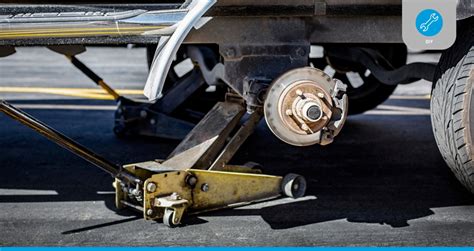How To Inspect Trailer Bearings
Ronan Farrow
Mar 25, 2025 · 3 min read

Table of Contents
How to Inspect Trailer Bearings: A Comprehensive Guide
Maintaining your trailer's bearings is crucial for safety and longevity. Neglecting them can lead to catastrophic failures on the road, potentially causing accidents. This guide provides a step-by-step approach to inspecting your trailer bearings, helping you identify potential problems before they become major headaches.
Why Inspect Your Trailer Bearings Regularly?
Regular inspection is key to preventing costly repairs and ensuring safe travels. Ignoring bearing issues can result in:
- Wheel seizure: A seized wheel can lead to loss of control and accidents.
- Tire damage: Overheating bearings can damage tires, leading to blowouts.
- Bearing failure: Complete bearing failure necessitates costly repairs and downtime.
- Axle damage: Neglect can cause damage to the axle itself, requiring even more extensive and expensive repairs.
Proactive maintenance is far cheaper and safer than reactive repairs.
Tools You'll Need for Bearing Inspection
Before you start, gather these essential tools:
- Jack and jack stands: To safely lift the trailer. Safety First! Always use jack stands to support the trailer's weight. Never work under a vehicle supported only by a jack.
- Wheel chocks: To secure the trailer wheels during inspection.
- Sockets and wrenches: To remove the wheel and hub. The specific sizes will depend on your trailer.
- Gloves: To protect your hands from grease and dirt.
- Penetrating oil: To help loosen stubborn nuts and bolts.
- Torque wrench: Crucial for tightening the nuts to the manufacturer's specified torque.
- Clean rags or paper towels: To clean the components.
- Bearing grease: To repack the bearings (if necessary).
- A flashlight or inspection lamp: To illuminate hard-to-see areas.
Step-by-Step Trailer Bearing Inspection
Follow these steps meticulously for a thorough inspection:
1. Preparation
- Secure the trailer: Park on a level surface, engage the parking brake, and use wheel chocks on the wheels that remain on the ground.
- Lift the trailer: Safely lift one wheel using the jack and secure it with jack stands. Remember, safety is paramount!
2. Wheel Removal
- Remove the wheel: Use the appropriate socket and wrench to remove the lug nuts and take off the wheel.
3. Hub Inspection
- Inspect the hub: Look for any signs of leaks, damage, or excessive grease. Any unusual signs warrant further investigation.
4. Bearing Inspection (Without Removal)
- Check for play: Grab the wheel and try to move it from side to side and up and down. Excessive play indicates worn bearings.
- Listen for noises: Rotate the wheel and listen for any grinding, growling, or humming sounds. These are indicative of bearing problems.
- Feel for heat: After rotating the wheel, carefully touch the hub. Excessive heat points to friction and potential bearing failure.
5. Bearing Removal and Detailed Inspection (If Necessary)
- Remove the hub: Carefully remove the hub assembly following your trailer's specific instructions. Consult your owner's manual if unsure.
- Inspect the bearings: Carefully examine the bearings for pitting, corrosion, or damage to the rollers or races.
6. Repacking Bearings (If Necessary)
- If bearings are damaged or excessively dry, replace them. If simply dry, repack with fresh grease. Follow the manufacturer's instructions. Use only appropriate grease for trailer bearings.
7. Reassembly
- Reassemble the hub and wheel: Tighten all nuts and bolts to the manufacturer's specified torque using your torque wrench. Improper tightening can cause damage.
When to Seek Professional Help
If you are uncomfortable performing these inspections or repairs yourself, it's best to seek the help of a qualified mechanic. Safety should always be your top priority.
Regular Maintenance Schedule
Regularly inspecting your trailer bearings is critical. Aim for a thorough inspection at least once a year, or before any long trip. Proactive maintenance saves you time, money, and potential accidents.
By following these steps, you can significantly improve the safety and longevity of your trailer. Remember to always prioritize safety and consult a professional when needed.
Featured Posts
Also read the following articles
| Article Title | Date |
|---|---|
| How To Make Dough Bait For Catfish | Mar 25, 2025 |
| How To Increase Amh Hormone Levels Naturally | Mar 25, 2025 |
| How To Learn Gto Poker | Mar 25, 2025 |
| How To Know If You Have Infection After Abortion | Mar 25, 2025 |
| How To Make Yogurt With Goat Milk | Mar 25, 2025 |
Latest Posts
Thank you for visiting our website which covers about How To Inspect Trailer Bearings . We hope the information provided has been useful to you. Feel free to contact us if you have any questions or need further assistance. See you next time and don't miss to bookmark.
